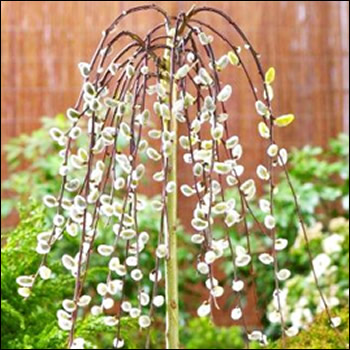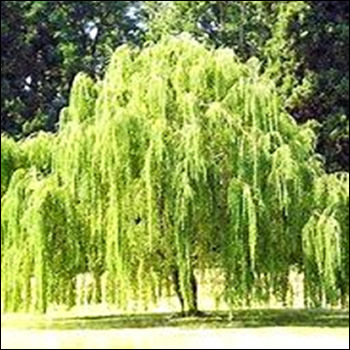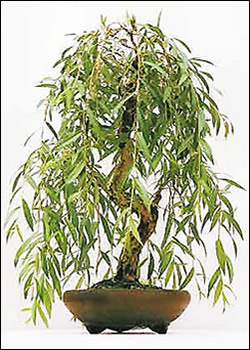


Salix or Willow are a species of shrubs and trees ranging from creeping mountain species to large trees. Some have spectacular catkins, others excellent summer foliage while some possess the finest winter bark. There are some 854 different cultivars, so it is not surprising there are so many variations.
The tallest grow to around 11 metres but some dwarf varieties can be less than 5m.
Willows are generally happy in most soils including damp areas. They are a very vigorous species and must be planted well away from buildings or drains (20+ feet away ideally). Willow roots spread widely and are very aggressive in seeking out moisture. For this reason, they can become problematic when planted in residential areas, where the roots are notorious for clogging drains, drainage systems, and septic systems, storm drains, and sewer systems.
The generic name Salix comes from Latin and was already used by the Romans for various types of willow. A theory is that the word is ultimately derived from a Celtic language, “sal” meaning 'near' and “lis” meaning 'water', alluding to their habitat. They are a strong species but do attract more than a hundred aphid species. Rust, caused by fungus Melampsora, is known to damage the leaves of willows, covering them with orange spots.
Cultivation:
Almost all willows take root very readily from cuttings or where broken branches lie on the ground. They are extensively cultivated around the world and are used in hedges and landscaping.
Willow as bonsai:
The Weeping Willow Bonsai is a dramatic tree that is both graceful and beautiful. Its delicate branches form pleasing lines and arches that look great as bonsai and make it a very popular tree. Maintenance of the weeping willow (Salix babylonica) is not for those wanting easy bonsai. They are fast growers and require a very high level of maintenance. Weeping willows can be beautiful bonsai but their care and styling is not easy. They need a lot of water and their strong growth must be controlled all the time or they lose their shape very quickly.
It is essential that you make a fairly large willow bonsai because the hanging branches and leaves need enough room to extend. The shoots need to be wired downwards all the time because they try to grow upwards to reach the willow's genetically predetermined height. It is important that you wire early in the season and place the wire far more loosely than you normally would. Because they are fast growing and the shoots full of water, swelling is rapid and soon results in unsightly scarring. Willows often lose branches which die for no apparent reason.
Upright, cascade and semi cascade are probably the only feasible styles for willow.
Do not let roots freeze in winter, they are full of water and if they freeze it turns to mush and soon rots.
On hot summers the willow needs huge amounts of water and must be watered several times a day. Never let the soil dry out; you can even place the pot in a shallow bowl filled with water during hot days in order to avoid drought damage. Water less in winter but always keep the root-ball moist.
Rapid growing root systems mean you must repot and root prune every year just before the buds begin to swell. Do not be afraid to prune the roots strongly to make room for new root growth. The soil should retain enough water but at the same time offer good drainage. As willows prefer a slightly alkaline environment, you can add a little pumice or lime stone to the growing medium.


The weeping willow, Salix babylonica, is native to northern China, but has been successfully cultivated across the world. This deciduous tree grows rapidly, and can exceed 20 metres in height. Compared to other species it is quite short lived, with an average lifespan of between forty and seventy years. As bonsai, this lifespan is usually even shorter, spanning approximately 25 years.
<

